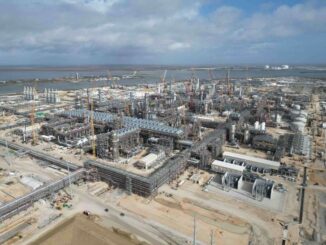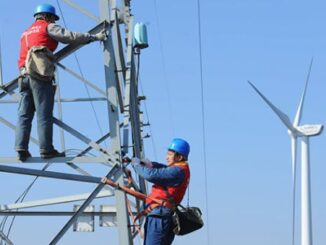
In a stunning blow to global climate finance efforts, the Net-Zero Banking Alliance (NZBA), once hailed as a cornerstone for the banking sector’s push toward carbon emission reductions, has voted to cease operations effective immediately. Established in 2021 under the United Nations’ umbrella, the alliance aimed to align banking portfolios with net-zero emissions by 2050. However, political pressures, particularly from U.S. lawmakers alleging antitrust violations, triggered a mass exodus of key members, leading to this dissolution. Resources like the NZBA’s “Guidance for Climate Target Setting for Banks” will remain publicly available, but the move signals a broader retreat from voluntary climate commitments amid rising costs and regulatory scrutiny.
This development follows a similar fate for the Net-Zero Insurance Alliance in 2024 and echoes ongoing challenges for asset management groups focused on climate goals. Advocacy groups like ShareAction have voiced disappointment, warning that major banks may now face less accountability for their environmental pledges. As the world grapples with the realities of energy transitions, this collapse raises questions about the viability of net-zero ambitions and their economic toll.
Got Your Tax Burden Calculated in 2025?
The Staggering Costs of Net-Zero Energy Policies
Net-zero policies, which encompass shifts to renewable energy, electrification, and emissions reductions, have already incurred massive expenditures globally, with future estimates painting an even more daunting picture. While exact historical costs are challenging to pinpoint due to varying methodologies, analyses from leading organizations highlight the scale. According to McKinsey, the total spending on physical assets for the net-zero transition from 2021 to 2050 could reach approximately $275 trillion, averaging about $9.2 trillion annually.
BloombergNEF estimates a similar investment opportunity of nearly $200 trillion by 2050, equating to roughly $7 trillion per year.
The International Energy Agency (IEA) projects that annual clean energy investments must triple to around $4 trillion by 2030 to stay on track for net-zero by 2050.
Another McKinsey study pegs the additional annual cost at $3.5 trillion beyond business-as-usual scenarios.
Climate Policy Initiative calculates that $6.2 trillion annually is needed through 2030, rising to $7.3 trillion by 2050, to achieve net-zero goals.
These figures include investments in renewables, infrastructure, and technology, but they also reflect subsidies and policy-driven expenditures that have already totaled trillions since the Paris Agreement. For context, a Potsdam Institute study suggests cumulative global economic costs could range from $19 trillion to $59 trillion by 2050, factoring in disruptions to industries and jobs.
Critics argue these policies have diverted funds from more reliable energy sources, exacerbating economic strains without proportional emissions reductions.
Impact on Consumer Electricity Prices in the Top 10 Countries
Net-zero policies, including subsidies for renewables and mandates for grid upgrades, have contributed to rising electricity costs in many nations. While causation is debated—factors like supply chain issues and geopolitical events play roles—data shows correlations in countries aggressively pursuing these agendas. Below, we examine the top 10 countries by GDP (as of 2025 estimates: United States, China, Germany, Japan, India, United Kingdom, France, Italy, Canada, Brazil) and reported increases in consumer electricity prices attributable to net-zero and renewable transitions. Note that precise attributions vary, and some data reflects industrial rather than household prices, but trends indicate upward pressure.
|
Country
|
Estimated Price Increase Due to Net-Zero Policies
|
Key Notes
|
|---|---|---|
|
United States
|
10-20% rise in average residential rates since 2020
|
Policies like the Inflation Reduction Act have boosted renewables but added grid costs; fossil fuel stability has mitigated some hikes.
|
|
China
|
Minimal net increase (0-5%), with subsidies offsetting
|
Clean energy boom contributed 10% to GDP in 2024, but state controls keep consumer prices stable; investments reached $1.9 trillion in 2024 alone.
|
|
Germany
|
20-30% household increase over the last decade
|
Energiewende policies have driven high renewable surcharges; prices among Europe’s highest.
|
|
Japan
|
15-25% rise post-Fukushima, accelerated by net-zero goals
|
Shift to renewables and LNG imports post-nuclear phase-out; net-zero by 2050 adds further costs.
|
|
India
|
5-15% in urban areas, variable by state
|
Subsidized renewables expansion, but coal dominance limits impacts; grid upgrades for net-zero increasing bills.
|
|
United Kingdom
|
50-60% industrial price premium vs. peers
|
Highest electricity prices globally; net-zero costs blamed for 63% higher than France, 27% than Germany.
|
|
France
|
10-15% increase, lower than neighbors
|
Nuclear-heavy mix buffers renewable integration costs; still debating net-zero surcharges.
|
|
Italy
|
20-25% household hikes
|
Renewable mandates and EU policies contribute; high reliance on imports amplifies effects.
|
|
Canada
|
10-20% provincial variations
|
Hydro and renewables in some areas keep costs down, but net-zero targets add to fossil phase-out expenses.
|
|
Brazil
|
5-10% in recent years
|
Hydropower base, but drought and renewable shifts increase volatility; net-zero pledges emerging.
|
These figures draw from sources like the IEA and national reports, with debates ongoing about whether net-zero drives prices up or if benefits like energy security offset them long-term.
In the UK, for instance, industrial prices are the world’s highest, sparking criticism that net-zero is inflating bills without reliable alternatives.
Conversely, China’s massive clean energy investments have boosted economic growth without sharp consumer hikes, thanks to centralized planning.
Investor Outlook: Rising Investments in Oil, Natural Gas, and Coal?
For investors, the NZBA’s collapse could mark a pivotal shift, potentially accelerating capital flows back into fossil fuels. Banks’ exodus from such alliances—driven by political backlash, fiduciary duties, and the profitability of oil, gas, and coal—signals reduced pressure to divest from these sectors.
Major U.S. banks, which lead global fossil fuel financing, are now freer to prioritize returns over climate targets, potentially leading to “zombie” net-zero commitments that lack enforcement.
Forecasts support this trend: The IEA predicts a 6% drop in upstream oil investment in 2025 due to lower prices, but overall fossil investments remain robust at $1.1 trillion, while clean energy hits $1.5 trillion.
Oil prices are expected to stabilize at $70-80 per barrel, with potential upsides from geopolitics.
Natural gas production in the U.S. stays flat through 2026, and global coal demand plateaus with a slight 2025 uptick before declining.
ExxonMobil anticipates North American oil supply peaking next decade, but technology advances could sustain growth.
Yes, I believe investments in oil, natural gas, and coal will continue to rise—or at least stabilize at high levels—as banks shed net-zero constraints. This could shrink climate-friendly finance and erode trust in voluntary pledges, but for energy investors, it opens doors to profitable, demand-driven opportunities in traditional fuels. For consumers, it is a good thing, making money available from the banking system for oil and gas will help consumers, and if the IMF would loan money for oil and gas, billions of people would be lifted out of energy poverty.
The energy sector’s fundamentals—rising global demand and geopolitical needs—outweigh fading alliance pressures, making fossils a resilient bet.
Got A Tax Burden in 2025?
Crude Oil, LNG, Jet Fuel price quote
ENB Top News
ENB
Energy Dashboard
ENB Podcast
ENB Substack






Be the first to comment